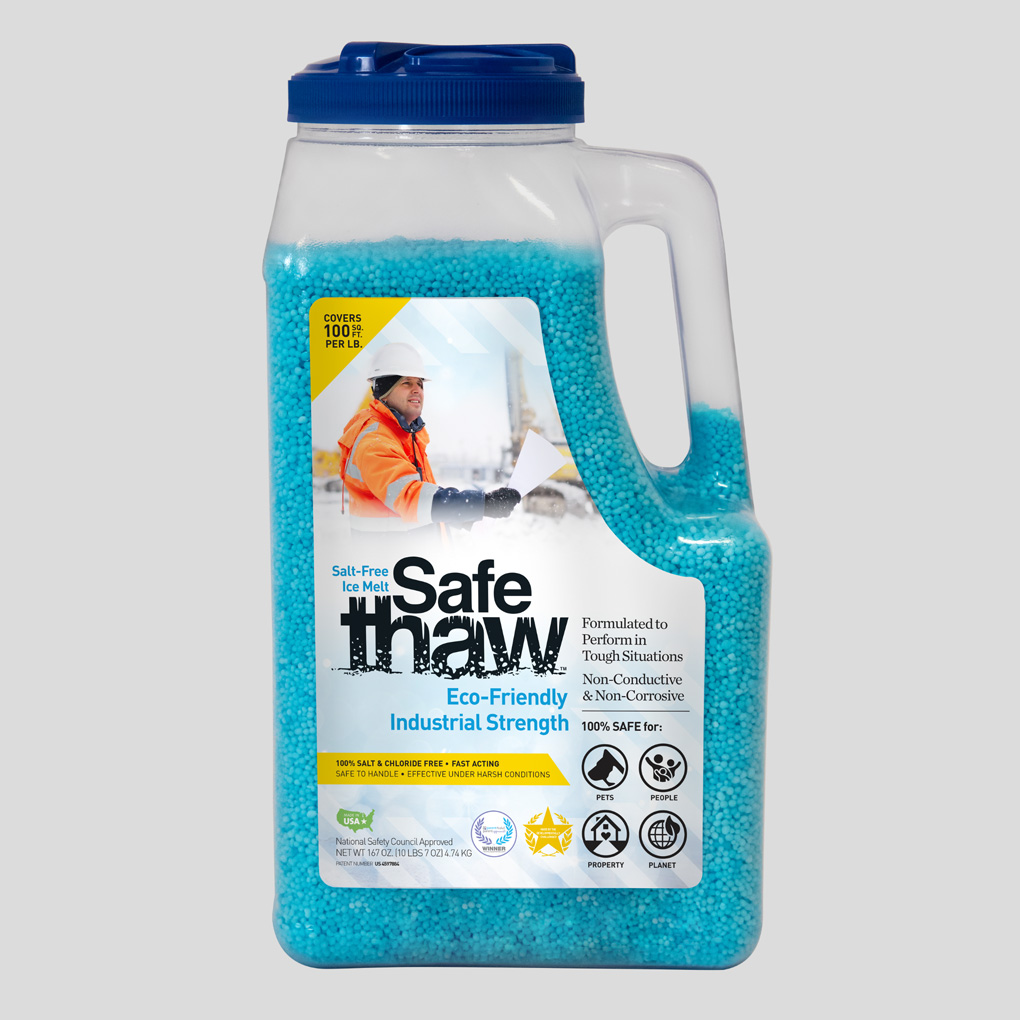Properly Disposing Of Dry Ice

Dry ice, being solid carbon dioxide, has a variety of uses, from shipping perishable items to creating theatrical smoke effects. But, when you’re finished using it, it’s not as simple as tossing it in the trash. Disposing of dry ice requires particular attention due to its unique properties. Here’s everything you need to know about safely getting rid of this material.

Safe Thaw
Safe Thaw was created as the ice management solution for tough winter environments. Ideal in commercial and industrial properties, shops, government agencies, bridges, and construction.
Understanding Dry Ice And Its Properties
Dry ice doesn’t melt the same way traditional ice does. Instead, it sublimates, which means it transitions directly from a solid to a gas. A frequently asked question is, how long does it take for dry ice to melt? The answer depends on several factors, such as the size of the piece, ambient temperature, and humidity. Generally, a pound of dry ice can last 3-5 hours in a typical cooler, but this isn’t set in stone.
Steps For Safe Disposal
- Ventilation is Key: When disposing of dry ice, ensure the area is well-ventilated. As the dry ice sublimates, it releases carbon dioxide, which can be hazardous in confined spaces. Prolonged exposure can lead to difficulty breathing and can be particularly dangerous in enclosed areas.
- Avoid Direct Contact: Due to its extremely cold temperature, dry ice can cause burns upon contact with skin. Always handle it with protective gloves or a towel.
- Leave it at Room Temperature: If you have leftover dry ice, the best way to dispose of it is to let it sublimate naturally. Place it in a well-ventilated area, away from children and pets. Do not place it in a sealed container as the gas buildup could cause it to explode.
- Do Not Pour Down the Sink: Disposing of dry ice in the sink or toilet can damage your pipes because of its extreme cold. Furthermore, it can lead to a buildup of carbon dioxide gas, posing a risk.
- Avoid the Regular Trash: Until the dry ice has fully sublimated, do not place it in the trash. The trapped carbon dioxide gas in a garbage bag or can is a potential hazard.
How Long Does It Take For Dry Ice To Melt And Other Considerations
Given that dry ice doesn’t melt but rather sublimates, its rate of disappearance varies. As mentioned earlier, factors like room temperature, piece size, and humidity play a role. If you’re keen on speeding up the process, breaking the dry ice into smaller chunks can hasten sublimation. Remember, always handle it with care and use protective equipment.
Winter Use And Precautions
For those living in colder climates, another fascinating aspect of dry ice is its winter applications. While it’s not advisable to use dry ice for de-icing because of its extreme temperature, homeowners often seek alternatives for their ice problems.
This brings us to Safe Thaw, a chemical and toxin-free ice melt that’s an excellent alternative for dealing with icy conditions. Unlike dry ice, which is harmful and not intended for such applications, Safe Thaw is an industrial-grade granular ice melt perfect for clearing driveways and walkways without causing harm to surfaces or the environment.
100% salt & chloride-free, fast acting Ice Management Solution
In Conclusion
Dry ice is a versatile substance with numerous applications, but disposing of dry ice requires attention to safety. Whether you’re pondering how long does it take for dry ice to melt or searching for the most secure disposal method, it’s crucial to handle this material with the respect it deserves. And, for your winter woes, turn to Safe Thaw – a safer, effective solution for battling icy surfaces.
Try Also Our Other Winter Safety Products:
Safe Paw
The Original and #1 Selling Pet and Child Safe Ice Melt for over 20 years. Guaranteed environmentally safe –It won’t harm animals or children, and it won’t damage your property. That’s Safe Paw. Safe Paw can change how winter affects our planet.

Walk On Ice
The handy disposable canister can be taken everywhere, with the same 100% naturally occurring minerals that provide instant traction on ice or snow. Use it on sidewalks, steps, or as an instant traction agent for your car.



